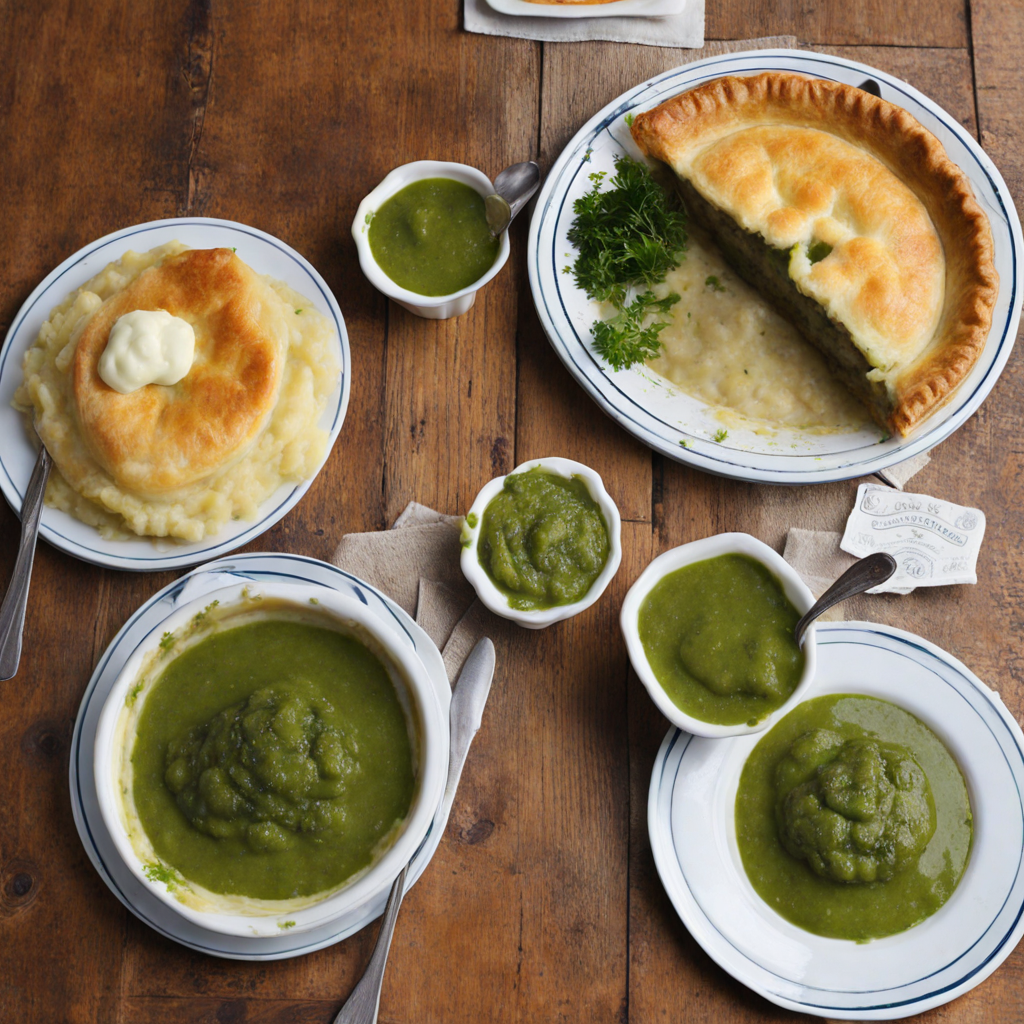Shepherd’s Pie
Shepherd's Pie is a traditional British dish that embodies the comforting essence of home-cooked meals. At its core, this savory pie is made with minced lamb, which is sautéed with onions, carrots, and peas, creating a rich and flavorful filling. The meat is often seasoned with herbs such as rosemary and thyme, enhancing its natural flavors and adding a delightful aroma. The combination of tender vegetables and succulent lamb creates a hearty base that beckons you to dig in, making it a favorite among many. Topping the meat mixture is a generous layer of creamy mashed potatoes, which is key to the dish's charm. The potatoes are typically whipped with butter and milk until they're smooth and velvety, providing a luxurious contrast to the savory filling beneath. This layer is then spread evenly over the meat, often styled with a fork to create little peaks that crisp up beautifully when baked. The pie is then baked in the oven until the potato topping is golden brown and slightly crispy, giving the dish an appealing rustic look. When you take a forkful of Shepherd's Pie, the first taste is a delightful combination of the tender meat and vegetables, followed by the creamy richness of the mashed potatoes. Each bite offers a balance of savory and comforting textures, making it a dish that warms the soul. This classic meal is often served with a side of green vegetables or a simple salad, but it stands alone as a filling and satisfying dish that is sure to introduce your palate to the heartwarming flavors of British cuisine.
How It Became This Dish
The History of Shepherd’s Pie: A Culinary Journey through Time Origins and Early Mentions Shepherd's Pie, a quintessential dish of British cuisine, has a rich history that weaves together the threads of social change, agricultural development, and cultural evolution. Its origins can be traced back to the late 18th century, with the term "pie" appearing in written records as early as 1791. However, the roots of this comforting dish likely extend even further back to medieval England, where the use of meat and vegetables encased in pastry was common. Originally, the term "shepherd's pie" referred specifically to a pie made with lamb or mutton. The dish was born out of practicality: it was a way to utilize leftover meat, particularly from Sunday roasts, and to stretch limited resources—an essential practice for the lower classes. The early versions of shepherd's pie were often baked in a pastry crust, a technique that was common for many meat dishes in the 18th and 19th centuries. This method of encasing meat in crust not only preserved the food but also made it portable for the working class. Cultural Significance in the 19th Century Shepherd's Pie became firmly entrenched in British culture during the 19th century, particularly as the Industrial Revolution transformed society. As more people moved to urban centers for work, the need for affordable, hearty meals grew. The dish was ideal for this new urban lifestyle: it was easy to prepare, economical, and could be made in large quantities. The Victorian era saw a rise in the popularity of "cottage pie," which typically used beef instead of lamb. The distinction between shepherd's pie and cottage pie became well-defined; shepherd's pie was made with shepherded sheep (hence the name), while cottage pie referred to the use of beef. This period also marked the beginning of the dish being associated with the working class, but it was not long before it began to gain popularity across all social strata. As the British Empire expanded, so too did the culinary influences that affected the ingredients and preparation methods for shepherd's pie. The integration of various spices and cooking techniques from the colonies enriched the flavor profile of this beloved dish, making it more diverse and appealing to a broader audience. The 20th Century and Modernization The two World Wars had a significant impact on British cooking, with rationing profoundly influencing how food was prepared and consumed. During these times, shepherd's pie became a staple of wartime meals. Ingredients were often substituted based on availability, with vegetables and grains taking center stage alongside the meat. This adaptability showcased the dish's practicality, as families learned to make do with what they had, creating variations that were both creative and resourceful. Post-war Britain saw a renewed interest in traditional foods as rationing ended and people sought comfort in familiar dishes. Shepherd's pie enjoyed a renaissance, becoming a symbol of home-cooked meals and familial bonds. Cookbooks began to feature the dish prominently, often accompanied by nostalgic descriptions of family gatherings and Sunday dinners. As the decades progressed, shepherd's pie evolved yet again. The rise of convenience foods in the late 20th century introduced frozen versions of the dish, making it accessible to even the busiest of families. However, this shift also sparked a counter-movement that celebrated homemade cooking and the use of fresh, local ingredients. Chefs and home cooks alike began to experiment with the traditional recipe, incorporating modern techniques and flavors while still embracing the essence of shepherd's pie. Contemporary Variations and Global Influence Today, shepherd's pie remains a beloved dish in the UK and has transcended borders to become popular in various countries, especially those with British heritage. Its adaptability has led to numerous variations, reflecting local tastes and available ingredients. Vegetarian and vegan adaptations, for instance, have emerged, utilizing lentils, mushrooms, or even jackfruit as substitutes for meat. These variations are often topped with creamy mashed potatoes or even sweet potatoes, showcasing the dish's versatility. In recent years, the rise of the “foodie” culture and the farm-to-table movement has reignited interest in traditional recipes. Chefs now emphasize the use of local, sustainable ingredients, often sourcing lamb or beef directly from nearby farms. This trend not only honors the dish's rich history but also aligns with contemporary values of environmental consciousness and ethical eating. In addition to its culinary transformations, shepherd's pie has also found its way into popular culture. It has been celebrated in literature, film, and television, often depicted as a symbol of comfort and home. The dish's presence in British pubs and restaurants remains strong, with many establishments offering their own unique takes on the classic recipe, further cementing its place in the national consciousness. Conclusion: A Dish of Resilience and Comfort Shepherd’s pie is more than just a dish; it is a reflection of the socio-economic changes that have shaped British history. It speaks to the resilience of communities, the adaptability of culinary traditions, and the comfort that food can provide. From its humble beginnings as a practical way to utilize leftovers to its status as a cherished comfort food, shepherd’s pie embodies the heart of British culinary heritage. As we savor each bite of this delicious dish, we are reminded of its journey through time—a journey that tells the story of a nation and its people. Whether enjoyed in a cozy pub, at a family gathering, or in a modern restaurant, shepherd's pie continues to be a testament to the enduring power of food to bring us together, nourish us, and evoke a sense of home.
You may like
Discover local flavors from United Kingdom







